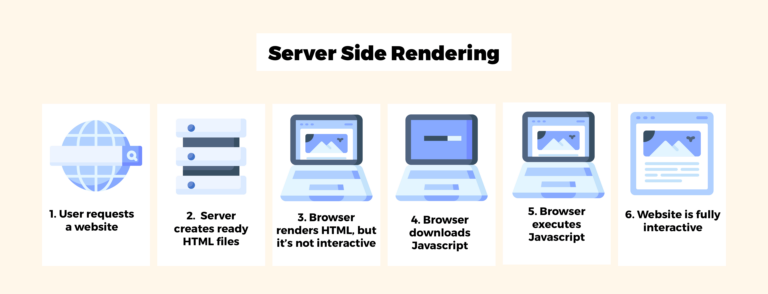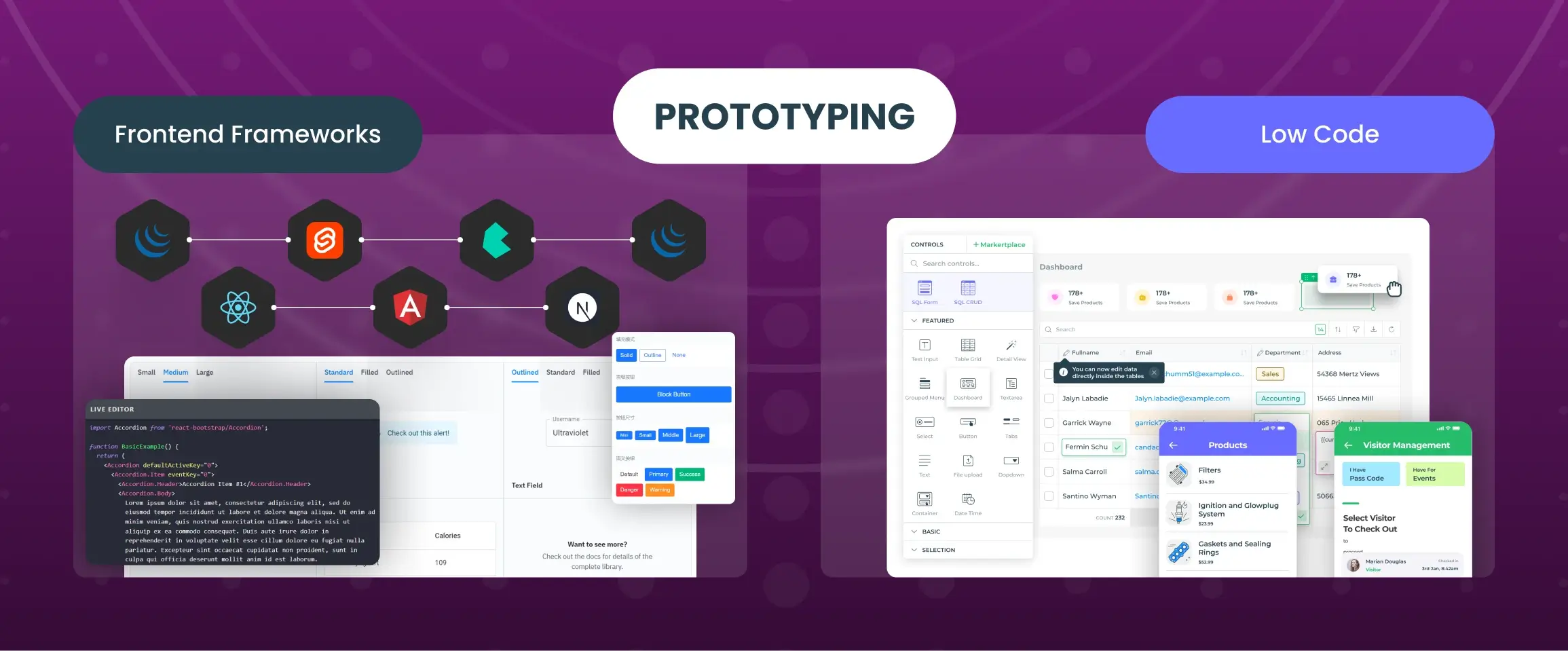

Front-End Development Trends for 2024
Software engineering teams are always under pressure to adopt the latest frontend development technologies to maintain user experience for customer satisfaction. Check out how the frontend trends have changed this year and how you can embrace them to your own benefit. Conversely, if you observe the applications you use daily, even the most intuitive and user-friendly UIs keep getting updated, so you stay.
While it is true that keeping up with the changing trends can come across as a burden; these frontend development trends can make your app development process agile and uncomplicated. And for developers who make it their mission to continuously impact the industry—staying up-to-date with the latest programming languages, frontend frameworks, and technologies is essential to remaining competitive in an ever-evolving industry.
Here are some of the top frontend development trends you might need to catch up on if you haven’t already.
Catching Up with the New Frontend Trends
Rise of the Jamstack
Jamstack (JavaScript, API, and Markup) is a framework that uses JavaScript, which helps you build websites and apps. It provides an easy-to-use platform for creating modern, high-performance single-page applications.
Jamstack works on the principle of pre-rendering and decoupling. It separates the frontend UI and pages from the database’s backend apps. Once the frontend is freed from the backend servers, it can easily be deployed globally to a CDN. Before deployment, the entire frontend is prebuilt into highly optimized static pages and assets. The global frontend uses Javascript and APIs to talk to backend services, allowing pages to be enhanced and personalized.
Image Credit: jamstack.org
Jamstack is used in custom frontend development because
- Reduces the loading time because pages are pre-generated at the build time, making it easier for your developers to manage their code, resulting in faster development speed and a great user experience.
- No server is associated with pre-rendering, so server security is not a problem. The only security you need to look into is the permissions on your users’ private content.
- Supports portability as Jamstack websites are static and pre-generated and can be easily hosted on various hosts without any hassle.
- Integrated with various JS libraries to add further functionality and ease your coding process increasing scalability.
- Hosting static content involves less cost than that dynamic or traditional web content. A website can be cached and served entirely from CDN, and vast infrastructure is not required.
Jamstack has revolutionized the way we build websites and apps, and many notable brands like Unilever, PayPal, Louis Vuitton, Nike, etc., are embracing the architecture with open arms.
Use Popular Frontend Development Frameworks
JavaScript (JS) is one of the most widely used programming languages. It is one of the core technologies of the World Wide Web, alongside HTML and CSS, and it offers the most extensive range of libraries, frameworks, and community support.
A JavaScript framework is a collection of JavaScript code libraries that provide a web developer with pre-written code for routine programming tasks.
But which are the most popular JS frameworks?
There are many, but let’s talk about the top three most widely used frontend JS frameworks.
- React: Created by Facebook, the React framework has introduced functional, declarative, and component-based styles. React is used to develop and operate the dynamic user interface of the web pages with high incoming traffic. Using virtual DOM ensures high-speed renders for web and app frontend development.
- Angular: Formally released in 2016, the Angular framework was established by Google. It is one of the most powerful, efficient, and open-source JS frontend frameworks based on TypeScript. It enables the development of classy single-page applications through component-based architecture and tree-view structure.
- Vue.js: Nowadays, one of the simplest frontend frameworks is Vue.js. Based on usage and satisfaction ratings, it is the third-best JavaScript framework. Its dual integration is one of the most appealing features for creating high-end SPAs.
JavaScript is responsible for the rise of multiple web apps like Netflix, LinkedIn, PayPal, OkCupid, BBC World News, etc.
Headless Architecture for CMS
A headless architecture is a type of backend content management system where the backend (content repository) “body” is separated from the frontend “head.” The business logic and the functionalities are available as APIs. A specialized backend streamlines these APIs to a frontend channel respective to the user platform. This architecture allows the creation of multiple frontends in various formats using different technologies.
Image Credit: kreationsbyran.se
In other words, a headless CMS is a centralized content repository that independently runs in the background using a web service API to push content across multiple devices.
- Content infrastructure enables scalability by simultaneous collaboration, replacing the slow waterfall approach to development in an agile framework where IT teams can work in parallel, leading to a decrease in time-to-market
- Works on multiple channels or platforms, promoting the reusability of code and reducing developers’ rework and effort
- When all the content is accessible on any digital platform, brands can make the most of features like personalization and localization
- Provides a flexible architecture giving the freedom to developers to choose the frontend framework
- Offers a richer user experience, so developers can get creative with the headless architecture by using the existing code, content, or server
Moving Towards a Micro Frontend Architecture
Micro frontend architecture is a design approach in which a frontend app is decomposed into individual, semi-independent “micro apps” working loosely together. It was built as a solution for the monolithic frontend structure. It breaks the monolithic structure into separate components that resemble independent applications. With different components to work on, development teams can simultaneously work together on individual components of a single codebase to develop the entire frontend.
Image Credit: martinfowler.com
Advantages of using micro frontend architecture are
- Smaller codebase resulting in easily maintainable components
- Promotes scalability because the micro frontend teams are decoupled and independent
- Independent components help maintain stability, and if there is any failure or upgrade, only that particular component would require attention
- Upgrade and update are easier for smaller codebase components without affecting others and providing a better user experience
Some brands that adopted micro frontend architecture to scale and improve their UI/UX include Spotify, IKEA, American Express, and Starbucks.
Develop with Progressive Web Apps (PWAs)
PWAs have become very popular recently in custom application development services because it offers a cross-platform web app that uses emerging browser APIs and features and a traditional progressive enhancement strategy. They are developed using popular web technologies like HTML, JS, and CSS. It gives your users a responsive experience while also providing features like push notifications, an add-to-home screen, etc.
Image Credit: techaheadcorp.com
- No installation is needed in PWAs, as they are websites developed with modern web technologies but can appear as an application on the user’s home screen without any installation process.
- PWAs provide a native-like application experience through platform-specific features and are highly performant and load in a few seconds.
- Data for these websites can be stored locally on the user’s device without depending on a network connection.
- PWAs are well-secured because they follow HTTPS protocols like any other website or web application.
Therefore, Twitter, Instagram, Uber, Forbes, Starbucks, and Pinterest have developed PWAs, making their apps more reliable, with incredible speed and unbeatable performance across multiple devices, and more efficient than native mobile applications.
Adopting GraphQL
Facebook introduced GraphQL in 2018 to meet the changing needs of complex applications and resolve inflexibility issues with REST APIs.
GraphQL is a data query language and a server-side runtime for APIs. It prioritizes giving the clients precisely the data they request and nothing more. Designed to make APIs fast, flexible, and developer-friendly, it can be deployed within an IDE known as GraphiQL. As an alternative to REST, GraphQL lets developers construct requests that pull data from multiple data sources in a single API call.
Image Credit: devopedia.org
The advantages of GraphQL include
- A single graph for query retrieval offers the company a way to federate its entire API
- Provides an interface and strongly defined data types for excellent client performance and efficient error handling that help in reducing miscommunication between the client and the server
- Allows an application API to evolve without breaking existing queries
- GraphQL offers many open-source extensions that provide features not available with REST APIs.
- Does not dictate a specific application architecture and can be introduced on top of an existing REST API
Many companies like Atlassian, Audi, Coursera, Facebook, GitHub, Airbnb, and Lyft have leveraged GraphQL in their mobile apps, websites, and APIs.
Rebooting User Experience with Motion UI
Motion UI is a modern and in-demand frontend development design style used worldwide. It is a UX design element that genuinely puts your website and app interfaces to life.
Motion UI can tell a story and invoke varied emotions in your customers. Storytelling is a powerful way to drive engagement online, but at its heart, a story is simply a sequence of events. When combined with motion and animation, storytelling can create exceptionally aesthetically-pleasing moments and reinforce incredibly functional user experiences.
GIF Credit: theymakedesign.com
Motion UI is the most effective and straightforward approach to capturing and maintaining users’ attention. You can broadcast your messages as quickly as possible using motion design. It is a convenient and simple format to reveal the meaning of ideas and organize data. It is much more suitable to view a short animated film than to read content or even viewing static infographics.
We notice motion animations in almost every application—Uber, Facebook, Instagram, Google Apps, CRED, Snapchat, Spotify, and countless other apps most users use day-to-day.
Server-Side Rendering
Server-side rendering (SSR) has emerged as a top frontend development trend, especially with the growth of single-page applications and frameworks like React and Vue.js. Unlike client-side rendering, SSR pre-renders HTML on the server and sends it to the client, resulting in faster page loads, better SEO, and improved accessibility. SSR reduces the time users spend waiting for JavaScript to load, making content visible quickly. It also enables search engines to crawl and index pages effectively. With its ability to combine server and client-side rendering, SSR is vital for creating fast, SEO-friendly web applications.
Image credit: duomly.com
Some advantages of server-side rendering are:
- Faster initial page load: SSR enables the server to pre-render HTML, resulting in faster initial page loads and improved user experiences.
- Enhanced SEO: Search engines can easily crawl and index pre-rendered pages, leading to better search engine optimization and increased visibility.
- Improved performance on low-powered devices: SSR reduces the reliance on client-side JavaScript execution, making web applications perform better on low-powered devices or slower network connections.
- Better accessibility: By rendering content on the server, SSR ensures that the page is usable and accessible even if JavaScript fails to load or is disabled.
- Social media sharing and previews: Pre-rendered pages facilitate accurate social media sharing and previews since the necessary HTML content is readily available for platforms like Facebook or Twitter to scrape and display.
One well-known company that utilizes server-side rendering (SSR) is Airbnb. Airbnb employs SSR to enhance the performance and user experience of its website. By pre-rendering the HTML on the server, Airbnb ensures faster initial page loads and improved search engine visibility.
Single Page Applications (SPAs)
A single-page application (SPA) is an app that doesn’t need to reload the page during its use and works within a browser.
One of the best advantages of a SPA is the user experience. The user enjoys the natural environment of the app without waiting for the page reloads and other things. You remain on the same page, powered by JavaScript.
Image Credit: flipboard.com,
The primary benefit of single-page applications is their speed. Most resources SPA needs (HTML + CSS + Scripts) are loaded at the launch of the app and don’t need to be reloaded during usage. The only thing that changes is the user data transmitted to and from the server. As a result, the application is very responsive to the user’s queries and doesn’t have to wait for client-server communication every time.
- Faster than traditional apps because it loads only once at the initial request
- Use less bandwidth and can work on a slow internet connection
- Better user experience for mobile or desktop apps because users need not wait for a page to load
- Easier to integrate rich and advanced frontend features into a SPA when compared to a traditional app
Facebook, Gmail, Twitter, Google Drive, Google Maps, and GitHub are examples of SPAs.
Visual App Development Tools [Low Code/No Code]
Low code development platforms are the most exciting turn in the area of frontend development technologies. These visual app-building tools focus on the most critical aspects— front-end design and logic while taking care of boilerplate code. Building an app takes time and manual effort, from analyzing the issue, conceptualizing, and designing to coding. Low-code platforms help reduce the front-end as well as the back-end economic effort; it allows more customization in both aspects. These tools provide an intuitive drag-and-drop interface to create frontend using out-of-the-box UI components that can easily connect to databases and 3rd party apps to fetch data and take an action on. They enable the focus on the business logic and the ultimate goal—user experience.
Low code/no code app development platforms are visual software development environments where front-end engineers and developers drag and drop UI components, connect them and create enterprise-ready mobile or web apps.
Some advantages of using visual app development tools are
- Designed to accelerate software delivery by quickly developing apps for specific cases
- Allow the developers to design, test, deploy, and manage apps much quicker than the traditional approach.
- Creation of apps with a minimum of hand-coding and minimal upfront investment
- IT leaders can use their current skill sets and resources while integrating existing systems to build internal tools for their companies
- Using GUIs and configuration rather than traditional programming to either create new apps or further develop existing ones helps answer the market demands rapidly.
- Easily integrate the internal tools or apps with existing databases and APIs
Many companies like Wipro, Mondelez, Endy, LTI, Pfizer, Colgate, McKinsey & Company, and many more have been using visual development tools to build enterprise apps. Read more here!
While some parameters of one framework may take advantage over others, like:
- Speed to market
- Staffing up a team
- Re-platform existing applications
- Building a highly complex enterprise app
- Building an MVP for web & mobile
- Reuse components across platforms
- Building custom modern UI on an existing app
- A large app with a large distributed team
- A form-based app with complex rules
Benefits of Frontend Development
Let’s see the importance of frontend development with some statistics.
- Amazing first impression on customers: 82% of the top-ranked websites are mobile-friendly, and 83% consider a seamless user experience across all devices is very important
- Improves branding: 67% of users say that a poor website experience negatively affects their opinion of a brand
- Builds trust and reliability: 75% of user’s judgment about a business’s credibility is based on its website design
- Easy website/app navigation: There was a success rate of 80% when people used the navigation scheme structured, according to most users’ mental model
- Visitor retention: 74% of visitors are likely to come back to your site if it has a good mobile user experience
Conclusion
With the market competition reaching new heights every day, frontend developers are being pushed to develop enterprise-ready solutions to enrich efficiency, user experience, client satisfaction, scalability, accessibility, and, most importantly, speed. But, in between the fast-paced chaos and workload pressure, what’s important is to consider how you can improve the frontend of your existing apps.
DronaHQ has assisted various software development and engineering teams across different organizations, industries, and countries in delivering value-based low-code frontend for their web and mobile apps. We at DronaHQ have always believed in keeping up with the latest technology trends and providing the best enterprise-ready solutions to our customers’ dream projects.
Get in touch with one of our in-house experts and explore the possibilities of creating a unique frontend for your application.












